|
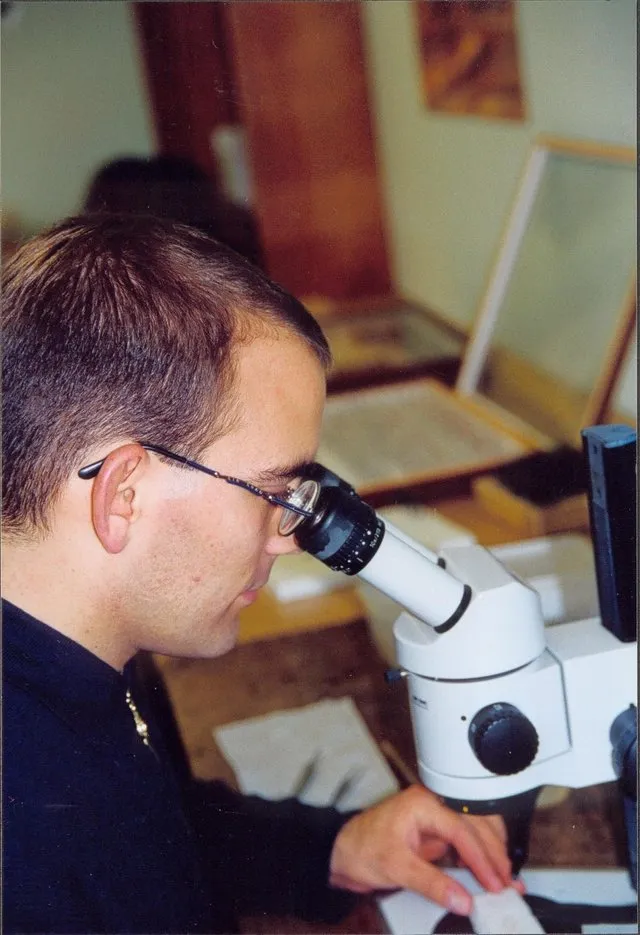
|
Looking at our little HIVE community after quite some months of existence I think it's doing rather well. Some really excellent photographers like for example @akukamaruzzaman, @digitalis or @brianhphotos are enjoying the visitor with their brilliant macros, @borjan is writing impressive articles about his long walks and expeditions, and I really appreciate the support of @faltermann, a butterfly expert and dedicated insect lover. Thank you and all these other engaged members which are contributing to the success of "Fascinating Insects"!
Also the recent community support by @acidyo with @ocdb is highly appreciated!
Of course where there is light, there is also shadow. For example plagiarism is always a threat as the internet offers lots of opportunities for cheaters to find and use content which isn't their own.
Another problem is that many users are too careless when it comes to the names or any details about the insects in their pictures. Way too often bugs are called beetles, wasps named flies or spiders labelled as insects.
My advice: if you don't know the exact name of an insect in your pictures neither guess nor invent one - better just ask. :)
In my eyes one of the aims of this community, apart from offering fantastic photos, is to spread knowledge about our little creatures and educate the reader. Furthermore, the impression the community makes on people outside HIVE matters, so please, be careful with your statements. :)
It's my daily (and really time consuming) job to go through the big amount of new posts and spot and correct at least the biggest mistakes.
To ease this work a little bit, recently I started to create some text blocks to explain typical errors and misunderstandings.
Today I would like to publish some of these boilerplates and pin this post as kind of (extensible) 'knowledge box' for our members on top of the community.
So here we go:
What's the difference between spiders and insects?
Spiders with eight legs and a bipartite body (prosoma, opisthosoma), belong to the order Araneae and the class Arachnida, while insects with six legs and a tripartite body (Caput, Thorax, Abdomen), belong to the class Insecta.
Both belong to the phylum Arthropoda.
'Woodlouse spider' (Dysdera crocata).
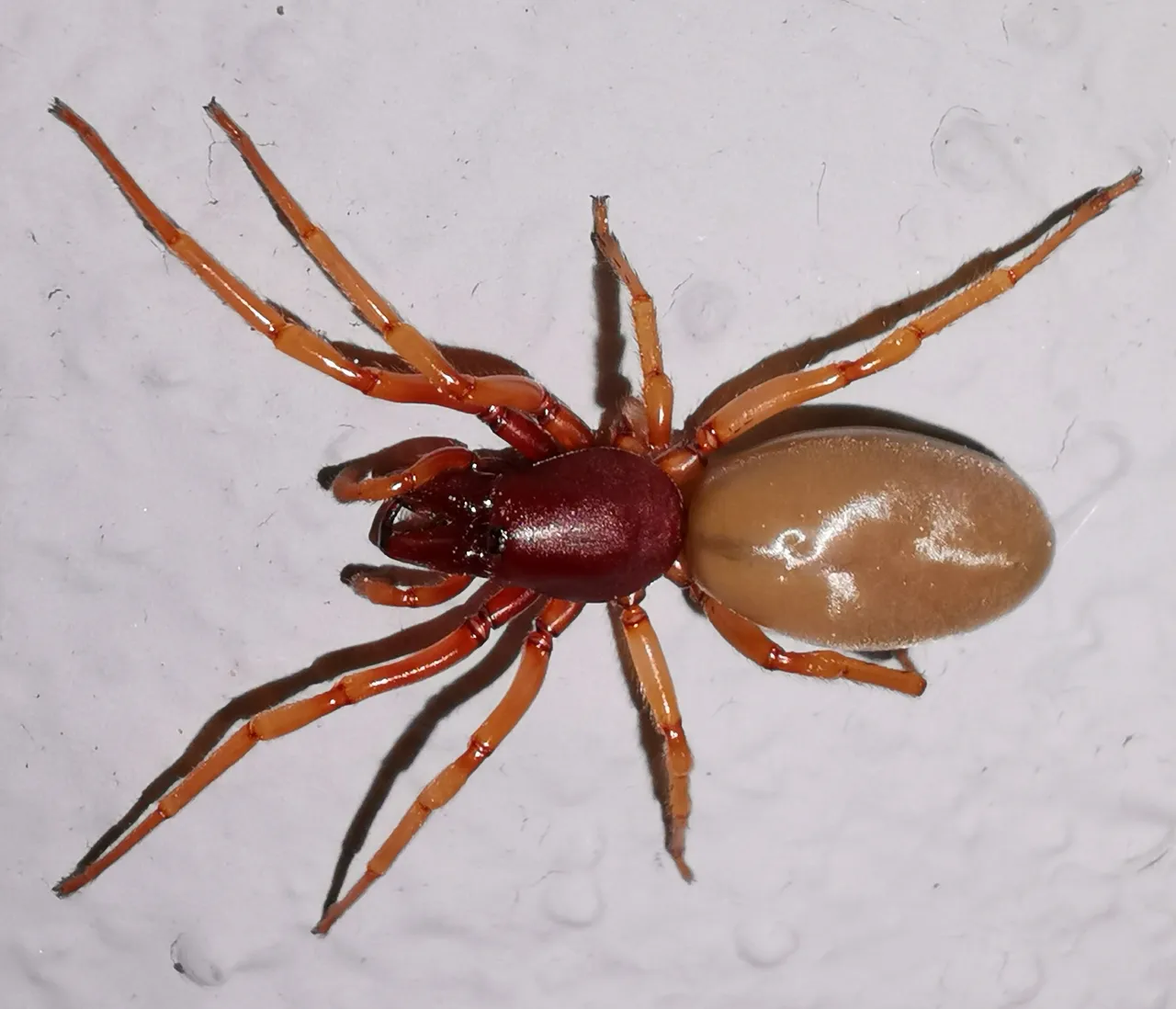
'Red-headed cardinal beetle' (Pyrochroa serraticornis), as example for an insect.
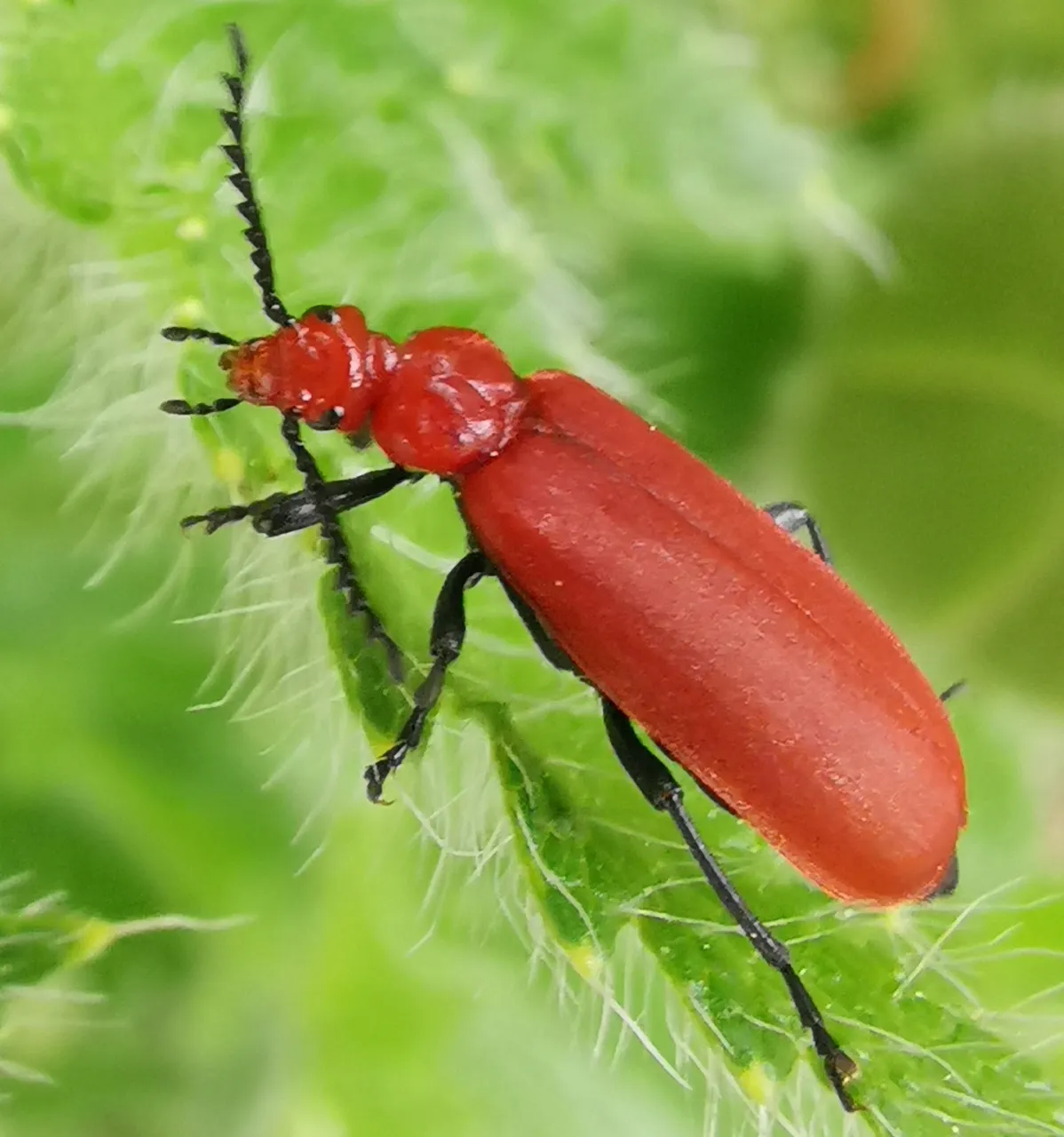
What's the difference between bugs and beetles?
Bugs (suborder Heteroptera) are having hemelytra where only the basal half is thickened while the apex is membranous (a part of the elytra looks somewhat transparent).
The other main difference between bugs and beetles (order Coleoptera) is that beetles have chewing mouth parts where their mandibles play an important role, while bugs are using a multipiece proboscis for stinging and sucking plant sap or the haemolymph of their victims.
'Red-legged shieldbug' (Pentatoma rufipes).
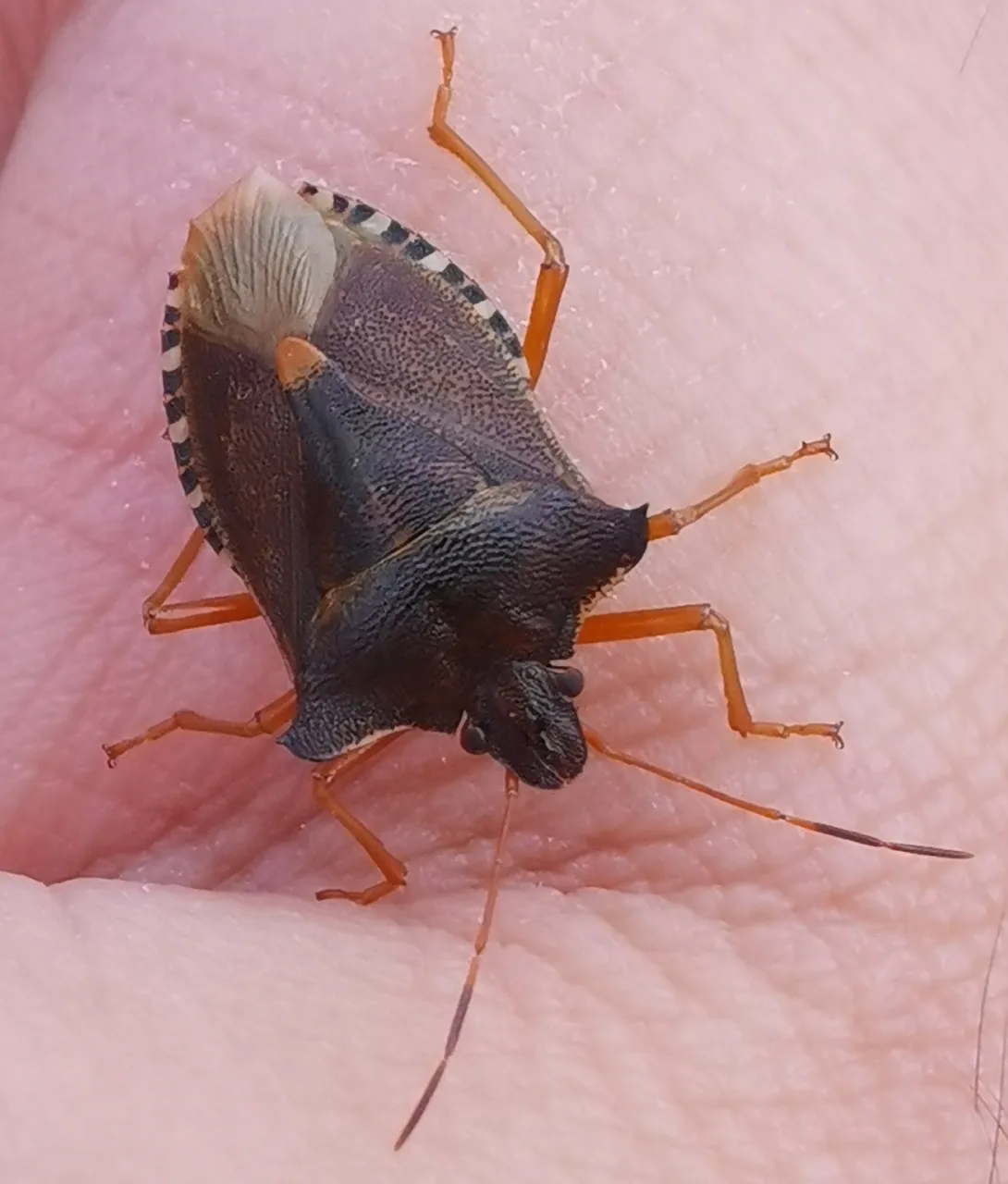
The 'Maybug' (Melolontha melolontha) is a beetle!
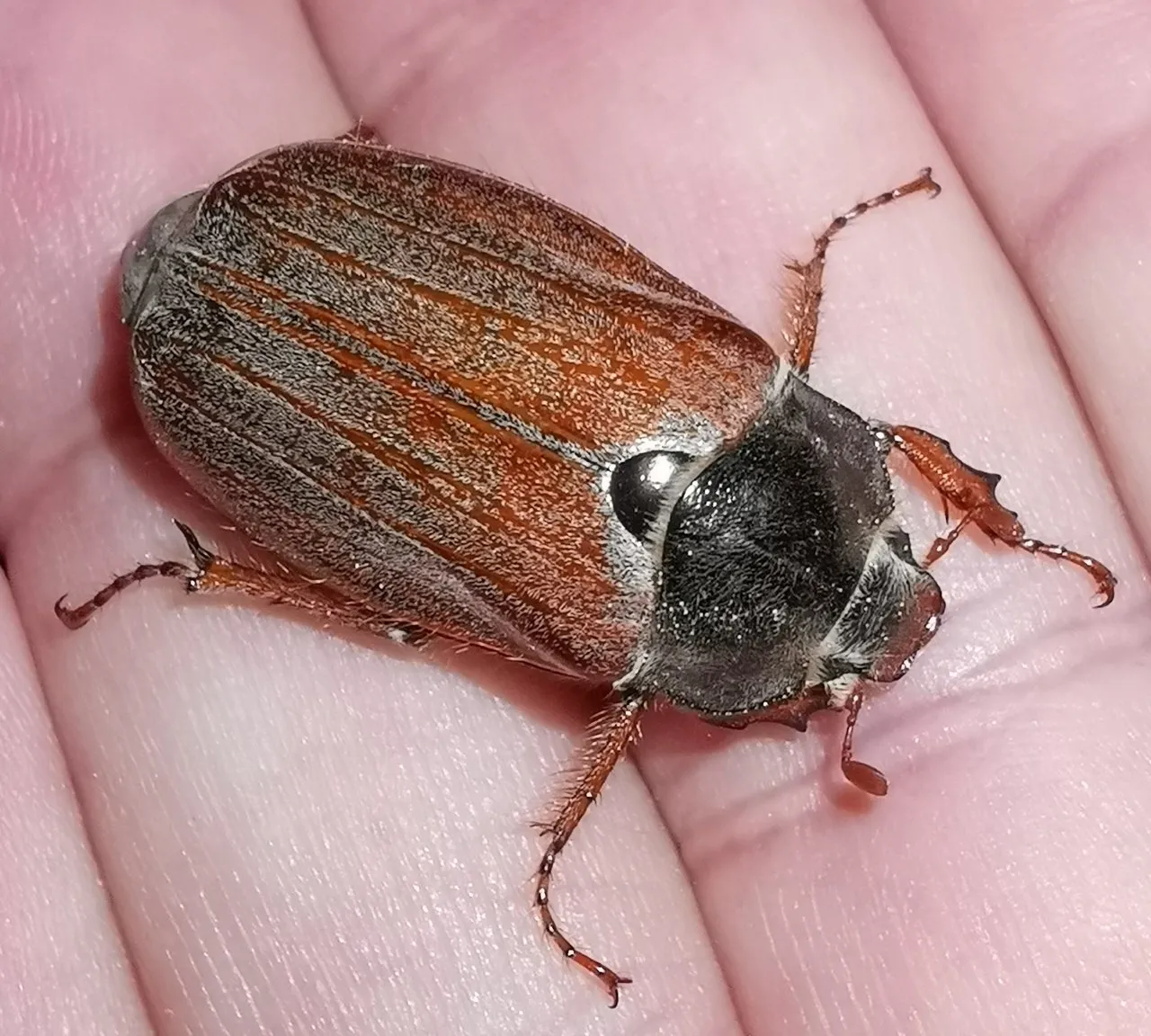
What's the difference between flies and bees, wasps, ants?
Bees (like for example also wasps and ants) belong to the order Hymenoptera.
However, flies belong to the order Diptera which - unlike alate Hymenoptera - have only two wings plus halteres.
Furthermore, if experienced enough, you may recognize the typical eye shape and colour, mouthparts (proboscis) and short antennae of many fly species.
Flies of the genus Lucilia.
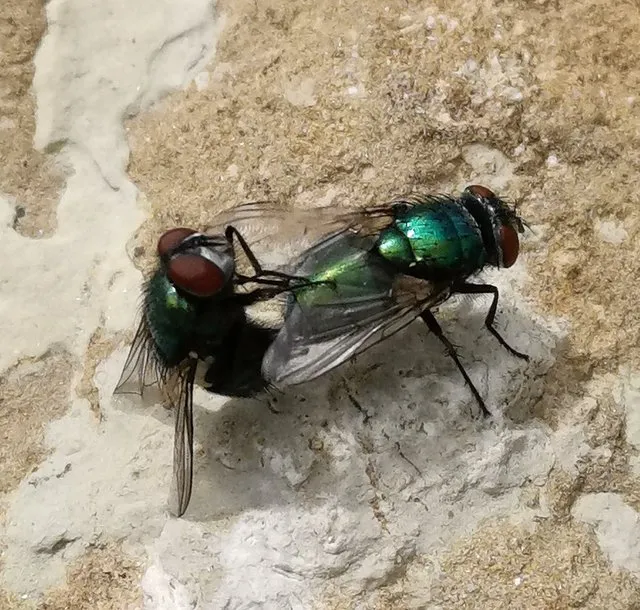
'European orchard bee' (Osmia cornuta) as example for a Hymenoptera species.
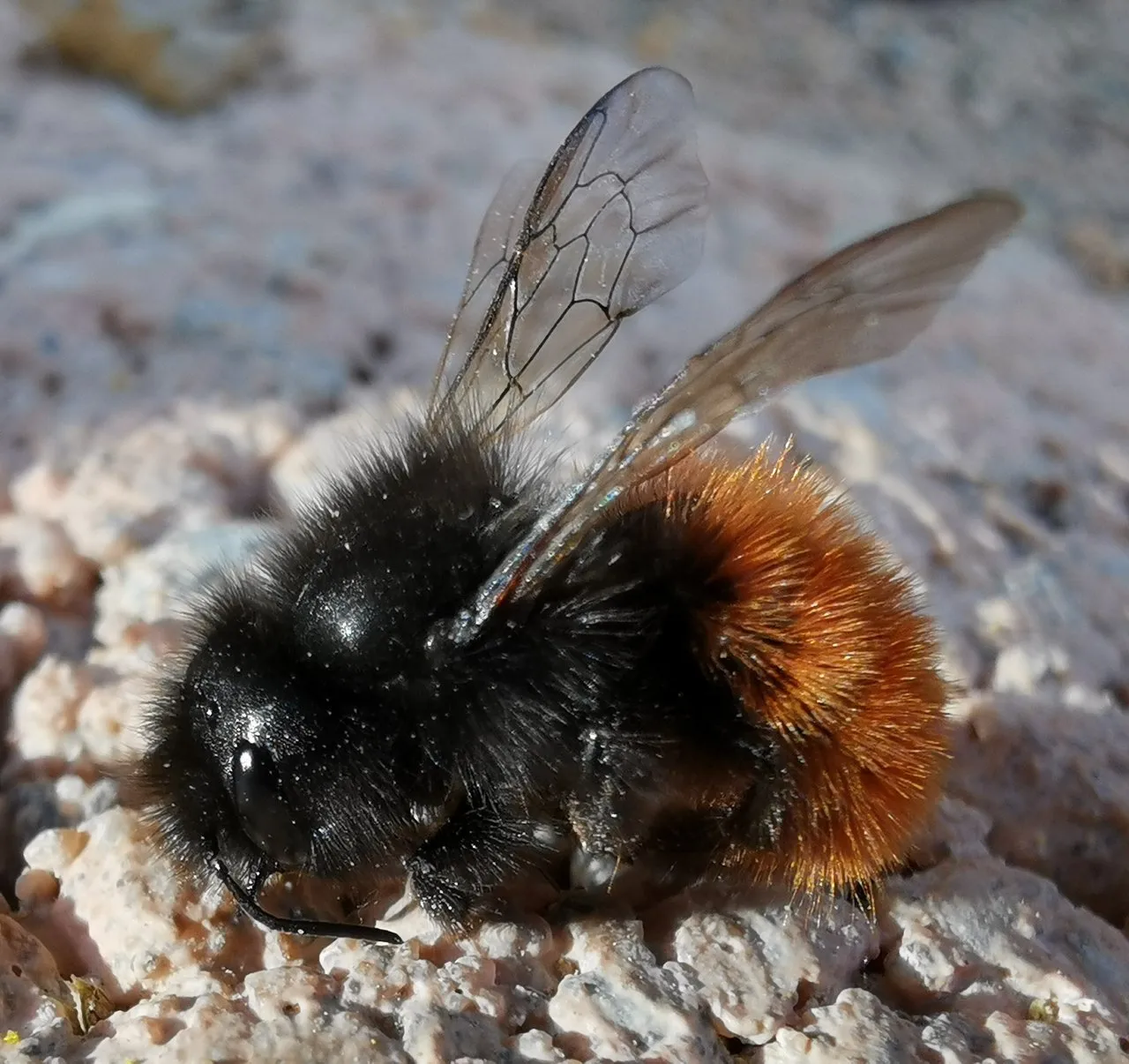
How to differentiate bees from other wasp species?
Bees (Anthophila) use a proboscis to incorporate nectar. All bees are vegetarians.
Other wasp species possess chewing-biting mandibles to be able to crush their prey, for example insects and spiders. Many of them are omnivorous.
The body of bees is usually rounder and more hairy, while other wasps are more elongated, slender, with a clearly visible waist, and less hairy.
The colors of bees are usually rather dark (brown, gray, ...).
Other wasps often show a black yellow (sometimes reddish) warning color.
'Western honey bee' (Apis mellifera).
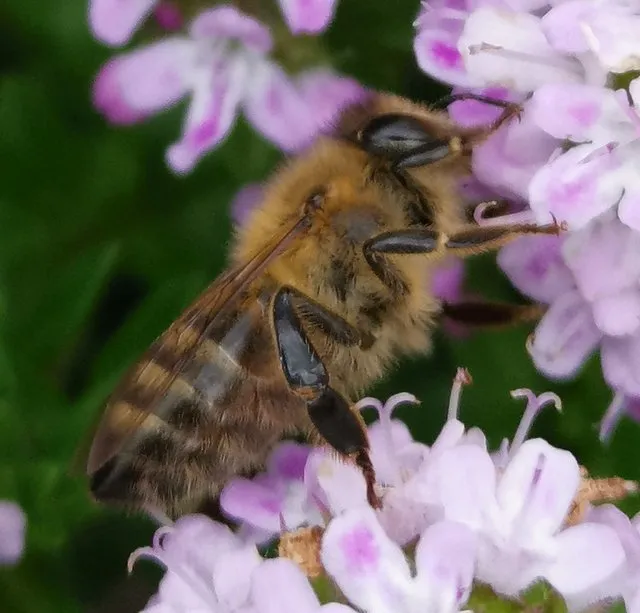
'Cuckoo wasp' Hedychrum nobile.
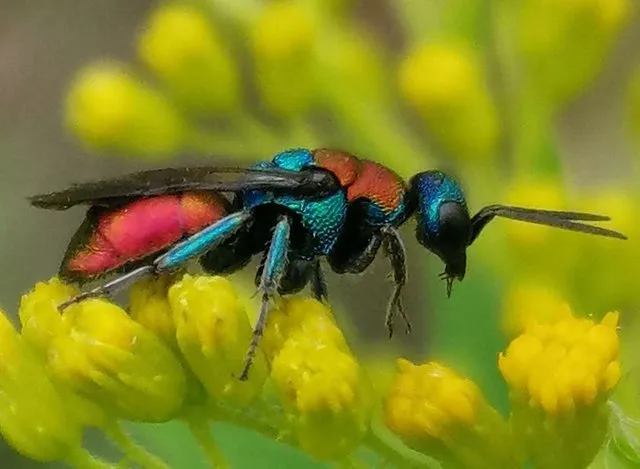
Don't confuse hoverflies with bees and wasps!
(Harmless) 'hoverflies' (family Syrphidae, order Diptera) are mimicking venomous insects (for example wasps and bees, order Hymenoptera).
Like all other flies they have only two wings plus halteres, while wasps and bees have four wings.
The concept behind this Batesian mimicry is to be protected by appearing like a dangerous insect but at the same time saving the energy which would be necessary to produce venom.
Helophilus pendulus as example for a hoverfly.
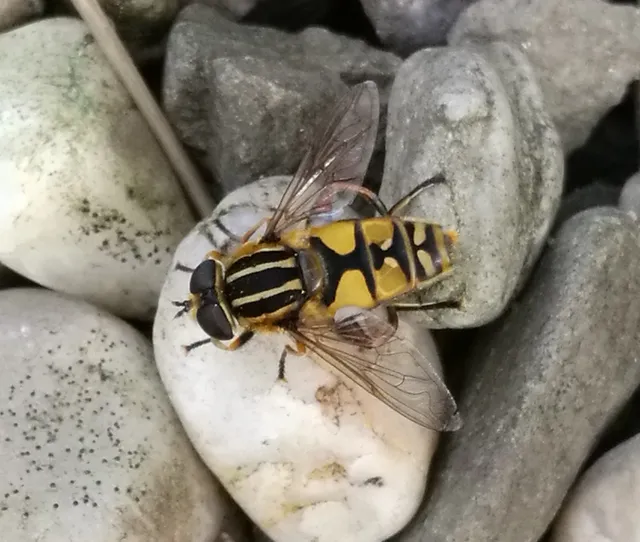
'European paper wasp' (Polistes dominula).

How to differentiate between grasshoppers and crickets?
The order Orthoptera is divided in the suborders Caelifera (including grasshoppers and locusts) with short antennae and Ensifera (including crickets) with long antennae.
Orthoptera species of the suborder Caelifera.

Nymph of the 'great green bush-cricket' (Tettigonia viridissima) as representative for the suborder Ensifera.
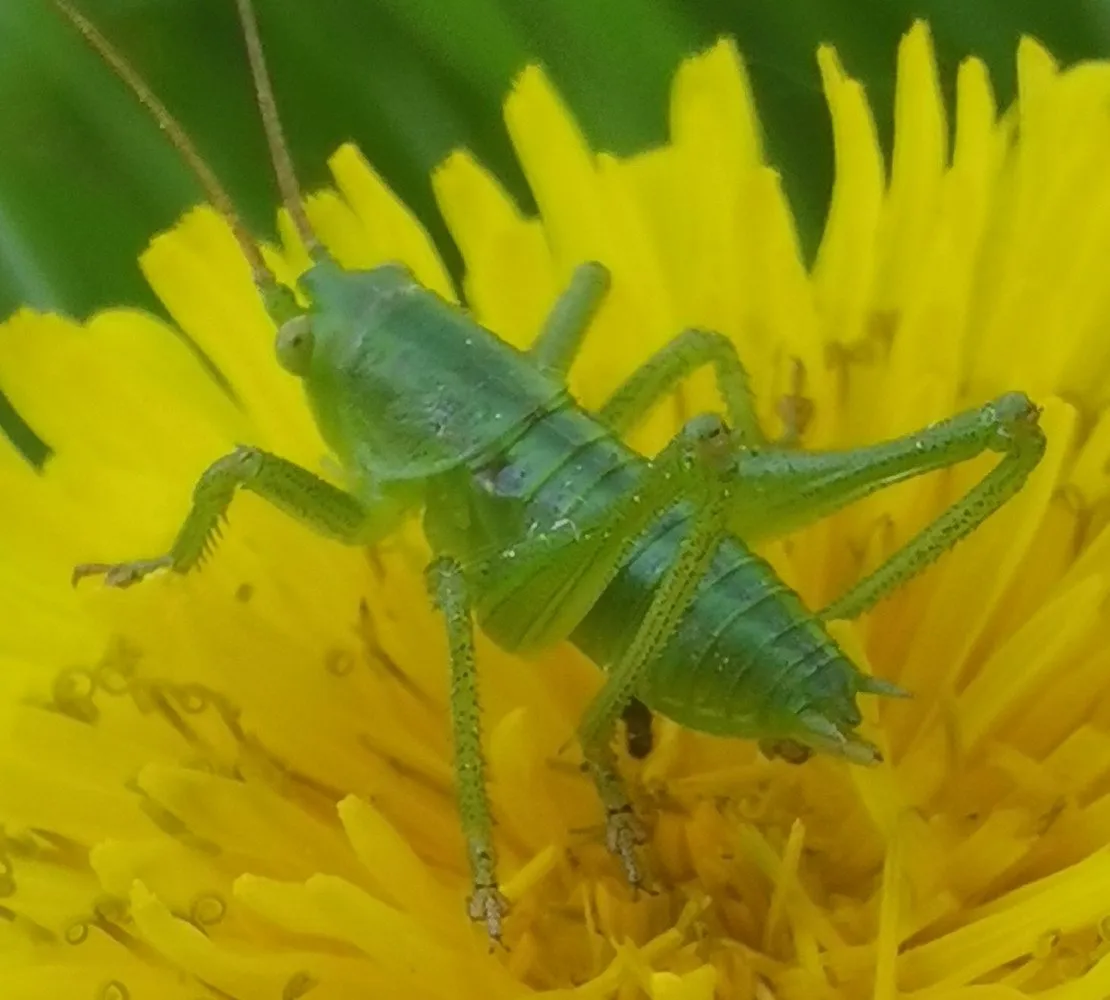
Dragonfly or damselfly?
The order Odonata is subdivided in dragonflies (suborder Epiprocta, infraorder Anisoptera) and damselflies (suborder Zygoptera).
Dragonflies are usually larger, their eyes border on each other, their wings are held open, horizontally or downwards at rest, and their wing pairs are dissimilar, with hind wings broader at the base.
Damselflies are usually smaller, their eyes are clearly separated from each other, their wings are held closed, usually over the abdomen at rest, and all wings are similar in shape.
Aeshna cyanea ('southern hawker'), Dragonfly.
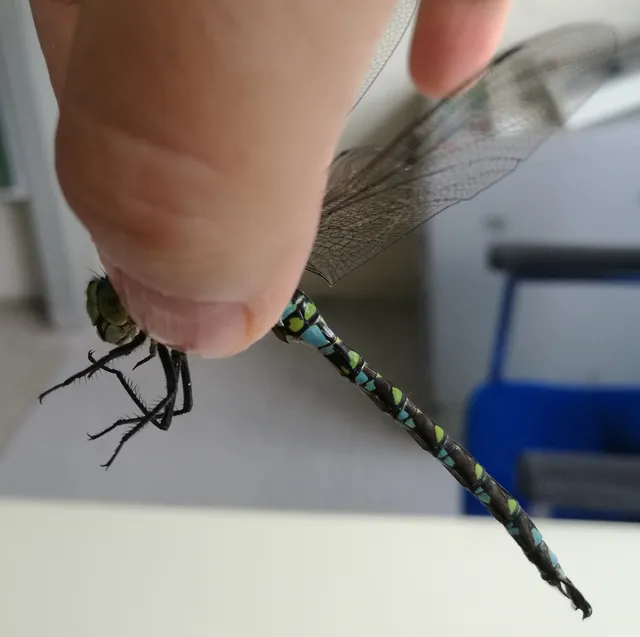
'Blue-tailed damselfly' (Ischnura elegans). Many thanks @faltermann for providing this beautiful photo!

How many legs do caterpillars have?
Like all other insects also caterpillars have only six legs (three pairs near the head). Structures of the abdomen which appear to be additional legs are called prolegs.
| Caterpillar of the 'Old World swallowtail' (Papilio machaon), photo stolen from my wife, @kobold-djawa. :) |
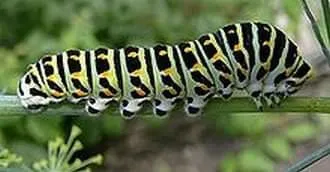
|
What are the differences between harvestmen and spiders?
Both taxa belong to the class Arachnida, however, spiders have a bipartite body (with prosoma and opisthosoma), while in harvestmen (order Opiliones) the connection between prosoma and opisthosoma is so broad that the body appears to be one single oval structure.
Furthermore, harvestmen have no silk glands and therefore don't build webs.
'Harvestman' (order Opiliones).
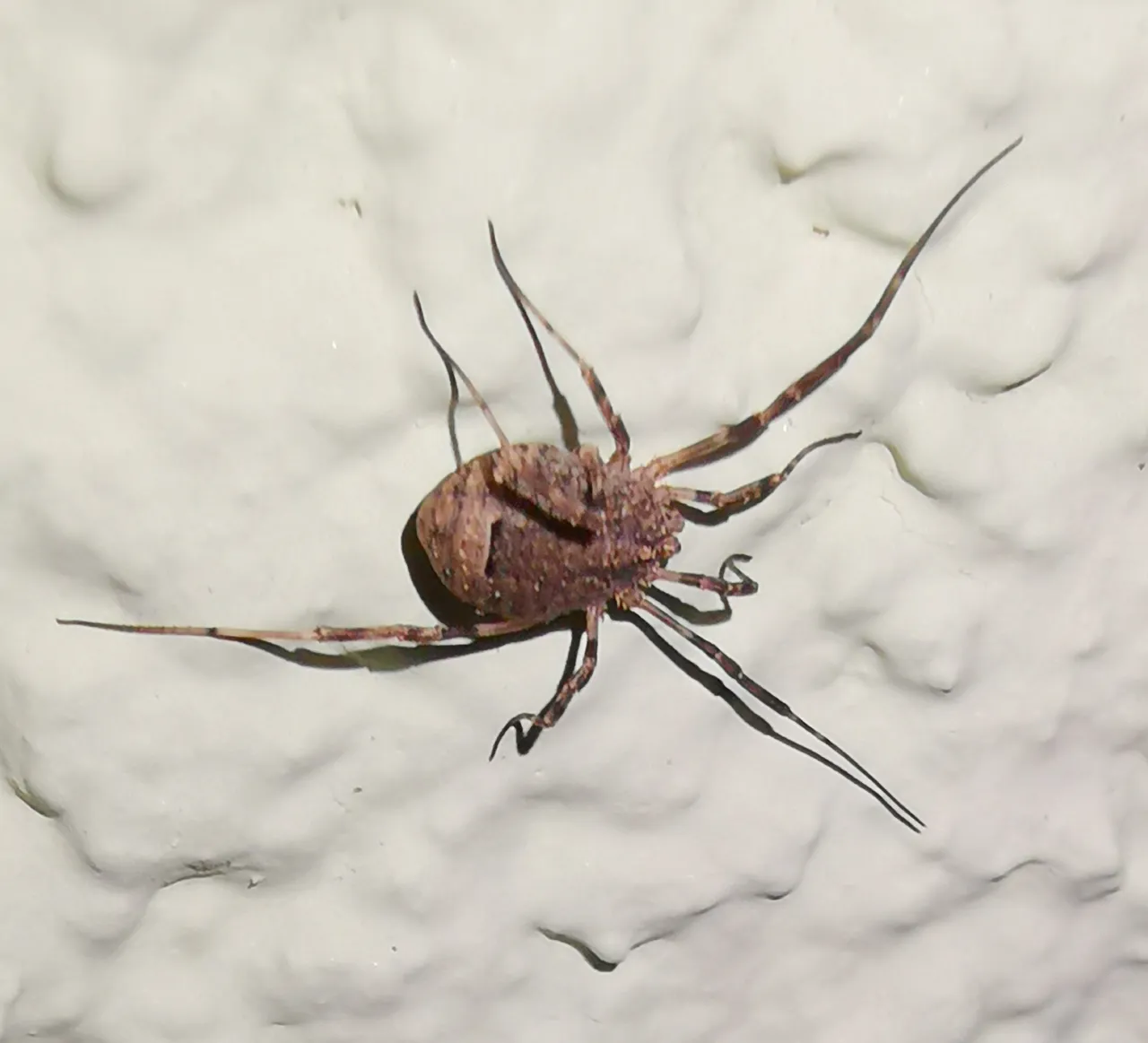
'Crab spider' (family Thomisidae).
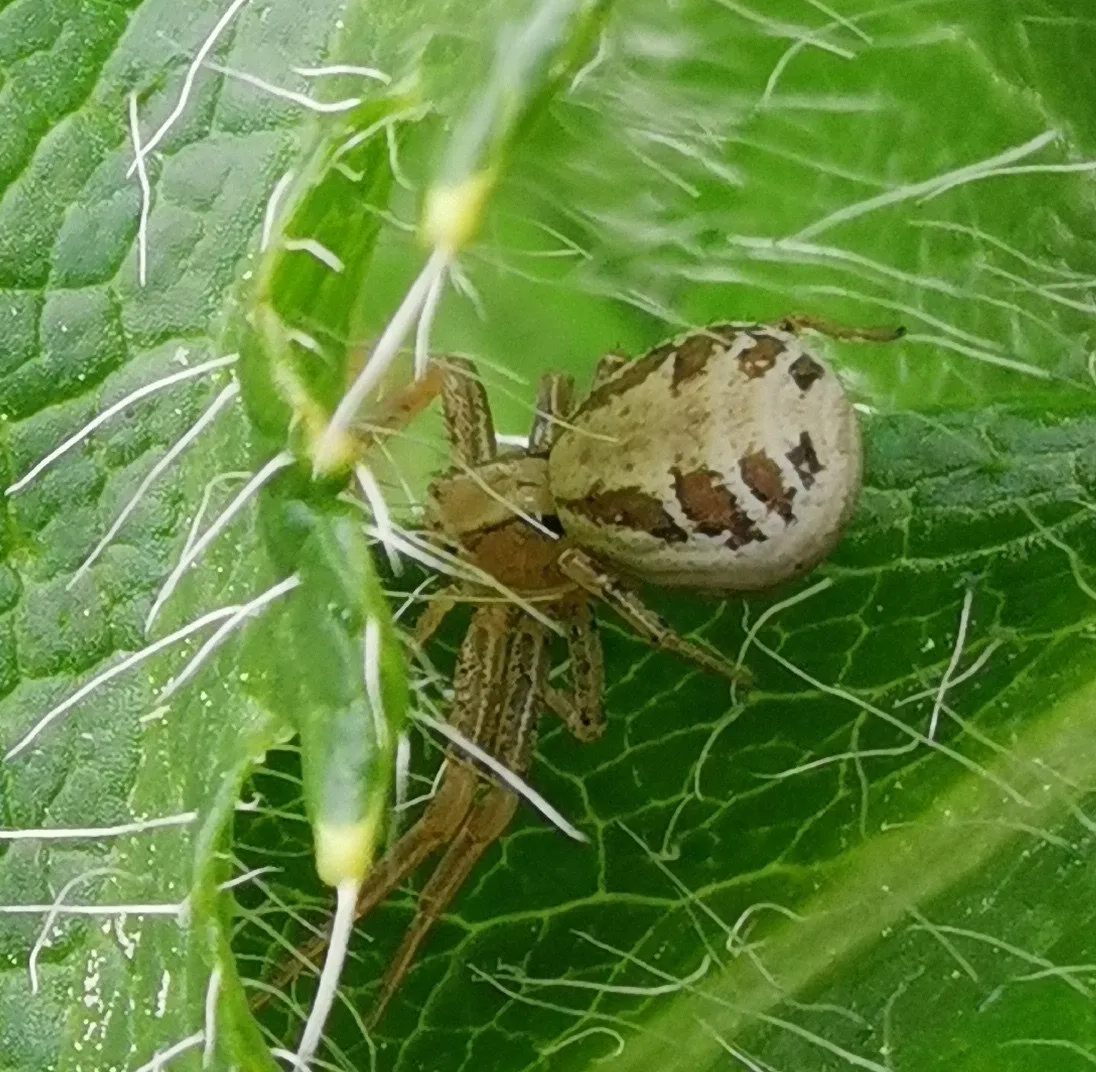
Final remark.
Many people fear insects, call them a "pest", "annoying" etc. and even try to kill them.
However, there is a reason why I chose the name "Fascinating Insects" for this community.
Let me mention some amazing facts about my beloved little creatures:
-
Some insects simply look fantastic, especially under the microscope: shining like gold with huge eyes in many colors, bizarre structures, frightening mandibles, colorful patterned wings ...
-
Body plan of insects is extremly flexible and adaptable: they have populated nearly all habitats which earth has to offer, they are able to run quickly, to fly, to swim, to climb, to grub and to jump.
-
Insects can attack and defend themselves in many different ways: they bite with sharp mandibles, produce poison and sting their victims, use raptorial forelegs (like for example the members of the order Mantodea), put out evil-smelling secretions or even 'explode' (bombardier beetles, Brachininae and others)![1]
-
Their diffusion based tracheal breathing[2] limits the maximal reachable size of the insects but on the other hand it is an extremely efficient respiratory system which makes it possible to 'inject' the advecting oxygen partly directly into the cells. That is the reason why for example ants can transport things which weigh a multiple of their own weight.
-
Some insects build highly developed, complex states where different castes (in case of ants and termites we have for example a queen, drones, workers and soldiers) have to fulfill very specialized tasks. Leafcutter ants even raise fungi in their nests which they "feed" with collected leaves.[3]
-
As a whole state (where the single ants, wasps or bees could be compared with the neurons of a brain) but also as single individuals insects can act surprisingly intelligent.[4], [5], [6], [7], [8]
Always when I hear someone call insects a "pest" I ask "Why? Do they pollute their environment, destroy the rain forests, change the climate, overfish the oceans, produce plastic and radioactive waste, conduct wars? Or is Homo sapiens doing all that? So who is the pest?" :)
Insects are doing exactly the same as every other organism on this planet (including us), too: to forage, try to defend themselves, find sexual partners to spread their genes into the next generation. Because of their huge success in doing all that we tend to consider some insect species as serious concurrents.
This is a community from insect lovers for insect lovers where the fascinating little creatures aren't "pests" but the main actors, the glamorous, admired stars! :-)
Sources:
- http://www.pnas.org/content/96/17/9705.full
- http://www.biology-pages.info/T/Tracheal_Breathing.html
- http://www.reed.edu/biology/professors/srenn/pages/teaching/web_2010/ec_ant_site_FINAL/index.html
- https://www.researchgate.net/publication/267509261_Soziale_Insekten_kollektive_Intelligenz_eines_Superorganismus
- http://www.spiegel.de/wissenschaft/natur/bei-der-futtersuche-denken-hummeln-logisch-a-892749.html
- http://www.cell.com/current-biology/abstract/S0960-9822(13)00337-0
- /@jaki01/intelligence-of-insects-part-i
- /@jaki01/intelligence-of-insects-part-ii
